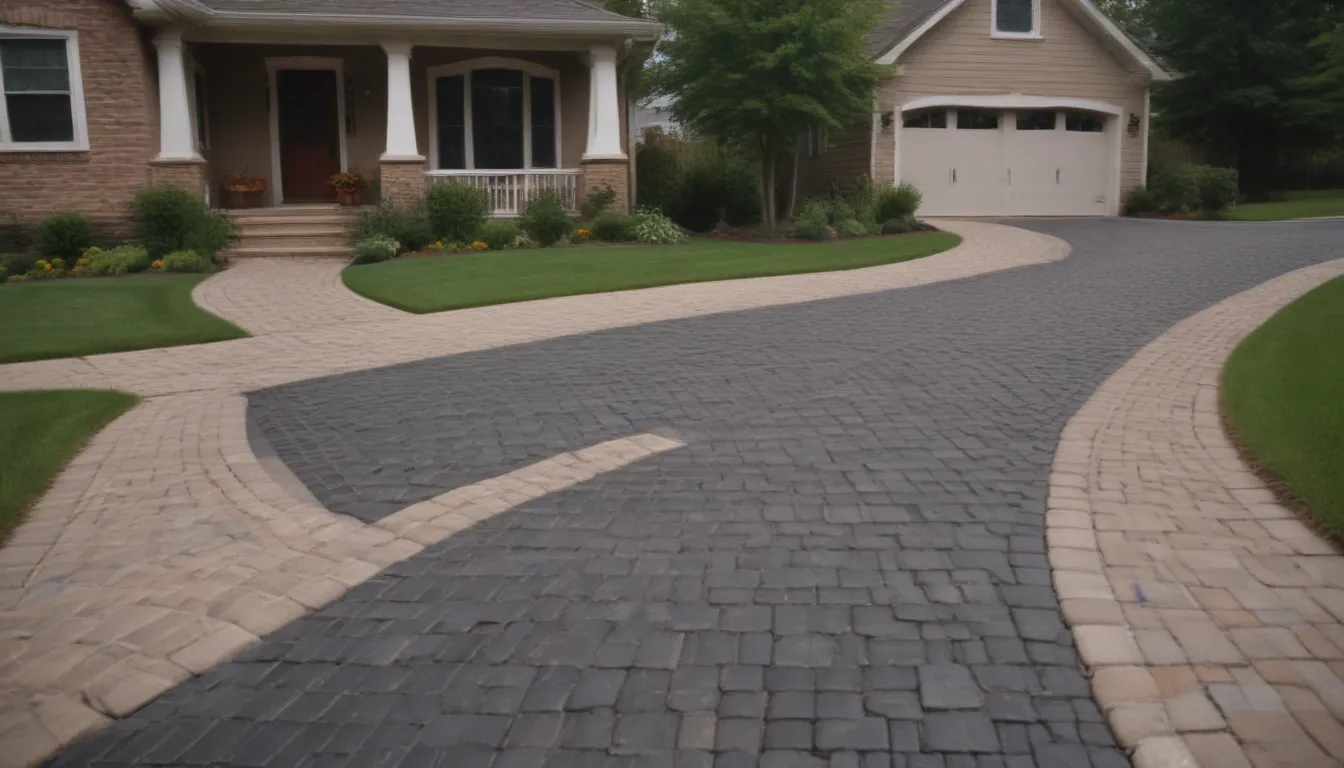Everything You Need to Know About Cobblestone Driveway Installation

Welcome to our comprehensive guide on cobblestone driveway installation! In this article, we will cover everything from what cobblestones are to the cost of installation, maintenance tips, design considerations, and more. If you’re considering a cobblestone driveway for your home, you’ve come to the right place. Let’s dive in!
What Is a Cobblestone?
Cobblestones, in the true sense of the word, are small blocks of paving material made from natural stone. The original cobblestone pavers were naturally occurring rounded stones collected from streambeds. Today, the term “cobblestone” has come to mean any paver made from natural stone, especially the shaped Belgian blocks that are popular for driveways. Cobblestones are typically made from granite, basalt, limestone, or other natural stones.
Advantages of Cobblestones:
- Very durable
- Adds value to your home
- Attractive “old-world” appearance
- Water-permeable surface
Disadvantages of Cobblestones:
- Expensive
- Labor-intensive installation
- Rough, uneven surface
- Snow removal can be difficult
- Weeds may grow in cracks
Cobblestone Driveway Cost
The cost of cobblestone driveway installation can vary depending on the size and type of stone, transportation costs, and whether you choose professional installation or opt for a DIY approach. Typically, cobblestones can range from $10 to $20 per square foot for the stone itself, with additional costs for installation materials and labor. The total installed cost of a cobblestone driveway can range from $40 to $75 per square foot, making it one of the most expensive paving materials available.
If a full cobblestone driveway is out of your budget, consider installing a cobblestone apron, border, or decorative inlay to achieve a similar look at a lower cost.
Driveway Apron
A driveway apron is the portion of your driveway that connects with the street. It is an essential part of the driveway structure and can be made of various materials, including cobblestones.
Cobblestone Driveway Maintenance and Repair
Maintaining a cobblestone driveway is relatively easy. Periodic washing and weeding are typically all that’s required to keep your driveway looking great. If the sand in the joints settles or washes away, simply add more sand and sweep it into place. In the event of base settlement, stones can be removed, additional base material added, and stones reinstalled.
For cobblestones joined with mortar, regular inspection and re-grouting may be necessary to prevent issues, especially in cold climates where frost/thaw cycles can cause joint cracking.
Cobblestone Driveway Design
Stylistically, cobblestone paving is best suited for homes with vintage architecture that complements the old-world charm of cobblestones. English Tudor or Colonial Farmhouse home styles are ideal matches for cobblestone paving, especially when natural stone is used in the construction of the house itself. The more rounded and tumbled the cobblestones are, the more authentic the paving installation will appear.
If genuine cobblestones are out of your budget, consider reclaimed cobblestones, which are not only more affordable but can also lend authenticity to your driveway.
Cobblestone Driveway Installation
Installing a cobblestone driveway is labor-intensive but can be done as a DIY project with patience and determination. The process involves excavating the area, laying a gravel base, spreading sand, and setting the cobblestones in place. Cobblestones can be set in mortar or laid dry, depending on personal preference and design.
Steps for Cobblestone Driveway Installation:
- Lay out the paving area with guide strings
- Excavate down 7 to 10 inches
- Smooth the bottom of the excavation
- Spread and compact gravel
- Pour, spread, and compact sand
- Set cobblestones into place
- Fill joints with sand or mortar
Cobblestone Pavers vs. Concrete Pavers
While true cobblestone pavers are elegant and durable, they come with a high price tag. If budget is a concern, consider using concrete pavers as a more cost-effective alternative. Concrete pavers can mimic the look of cobblestones at a fraction of the cost and offer good durability for several decades.
Top Brands of Cobblestone Pavers
When selecting cobblestones for your driveway, consider purchasing from a reputable company with a track record of quality and reliability. Regional stone resources and quarries will likely determine the type of cobblestones available in your area. Look for suppliers who offer reclaimed cobblestones if you’re aiming for a more authentic look.
Is a Cobblestone Driveway Right for You?
Cobblestone driveways are a timeless and durable option for enhancing the curb appeal of your home. While they come at a higher price point, the long-term value and aesthetic appeal they offer can be well worth the investment. If you’re looking for a driveway that can last for centuries with proper maintenance, cobblestones might be the perfect choice for you.
Start by calculating the total project area, determining the number of pavers needed, and assessing your budget to see if a cobblestone driveway is within reach.
In conclusion, cobblestone driveways offer a classic and sophisticated look that can elevate the appearance of any home. While they require a higher upfront investment, the durability and charm they provide make them a popular choice for homeowners looking to make a statement with their driveway. If you’re considering a cobblestone driveway, weigh the costs and benefits carefully to determine if it’s the right choice for your home.





